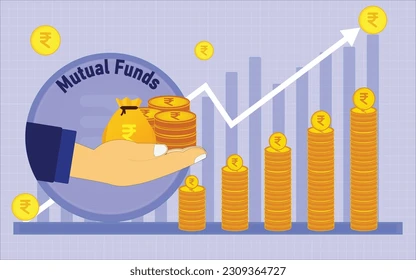The Indian stock market presents a compelling opportunity for investors seeking growth, fueled by the country’s strong economic fundamentals. Political stability, growing forex reserves, and a path towards fiscal consolidation paint a promising picture for the future. However, navigating this landscape requires a nuanced approach, particularly for those considering mid-cap companies.
The Double-Edged Sword of Mid-Caps
While India’s economic potential is undeniable, investors must acknowledge the inherent risk associated with mid-cap companies. These companies, typically smaller and less established than large-caps, offer the potential for higher growth but also carry a greater degree of volatility. This is especially true in the current market environment, where valuations in certain segments have reached elevated levels.
Shifting Tides: Investor Preference for Mid-Caps
Recent years have witnessed a significant shift in investor preferences. Driven by strong corporate earnings and robust performance of mid-cap funds, investors have flocked to these categories. Systematic investment plans (SIPs) and growing retail investor participation have further fueled this trend. In 2023 alone, mid-cap mutual funds attracted a staggering Rs 22,913 crore in inflows, compared to the outflow of Rs 2,968 crore from large-cap schemes. This highlights a growing appetite for the potential offered by mid-caps.
The Balancing Act: Risk and Reward
However, this enthusiasm needs to be tempered with risk management. The current valuations across mid-caps, small-caps, and micro-caps are significantly higher than their historical averages, leading to concerns amongst regulatory bodies. The Securities and Exchange Board of India (SEBI) has recently urged investors to exercise caution and not get swayed solely by recent performance.
Taking Control: Strategies for a Prudent Approach
Here are some strategies that can help investors navigate the mid-cap maze and maximize returns while mitigating risks:
- Thorough Research: Selecting mid-cap companies necessitates in-depth research. Look beyond just the recent price performance and analyze the company’s fundamentals, management team, growth prospects, and competitive landscape.
- Diversification is Key: Don’t put all your eggs in one basket. Diversify your portfolio across market segments and asset classes to mitigate risk. Consider a combination of mid-caps with large and small-caps, along with fixed-income instruments like bonds to achieve a balanced portfolio.
- Long-Term Vision: Mid-cap investments are best suited for a long-term horizon. The inherent volatility may lead to short-term fluctuations, but a long-term outlook allows investors to ride out market cycles and benefit from the potential growth of these companies.
- Active Management: Consider actively managed mid-cap funds. These funds leverage the expertise of experienced fund managers who can navigate the complexities of this segment and make informed investment decisions. However, ensure the expense ratios of these funds are reasonable.
Beyond the Numbers: Considering External Factors
While focusing on the companies themselves is crucial, investors in the Indian market must also consider external factors:
- Macroeconomic Environment: Stay updated on the overall economic indicators, government policies, and global events that can impact the stock market. A strong understanding of the macro environment can help you make informed investment decisions.
- Regulation and Policy Changes: SEBI and other regulatory bodies can introduce policies impacting mid-cap companies. Be aware of these changes and their potential implications for your investments.
Conclusion: A Calculated Gamble
Investing in mid-caps presents a calculated gamble. While the potential rewards are high, so are the risks. By carefully evaluating companies, employing sound risk management strategies, and staying informed about both internal and external factors, investors can position themselves to capture the growth potential of the Indian mid-cap segment while mitigating risk and navigating the market’s complexities. Remember, patience and a long-term perspective are key ingredients for success in this dynamic market environment.
Read more:Equity Funds on a Roll: Mutual Fund Industry Assets Surge Past Rs 65 Lakh Crore in August



GIPHY App Key not set. Please check settings